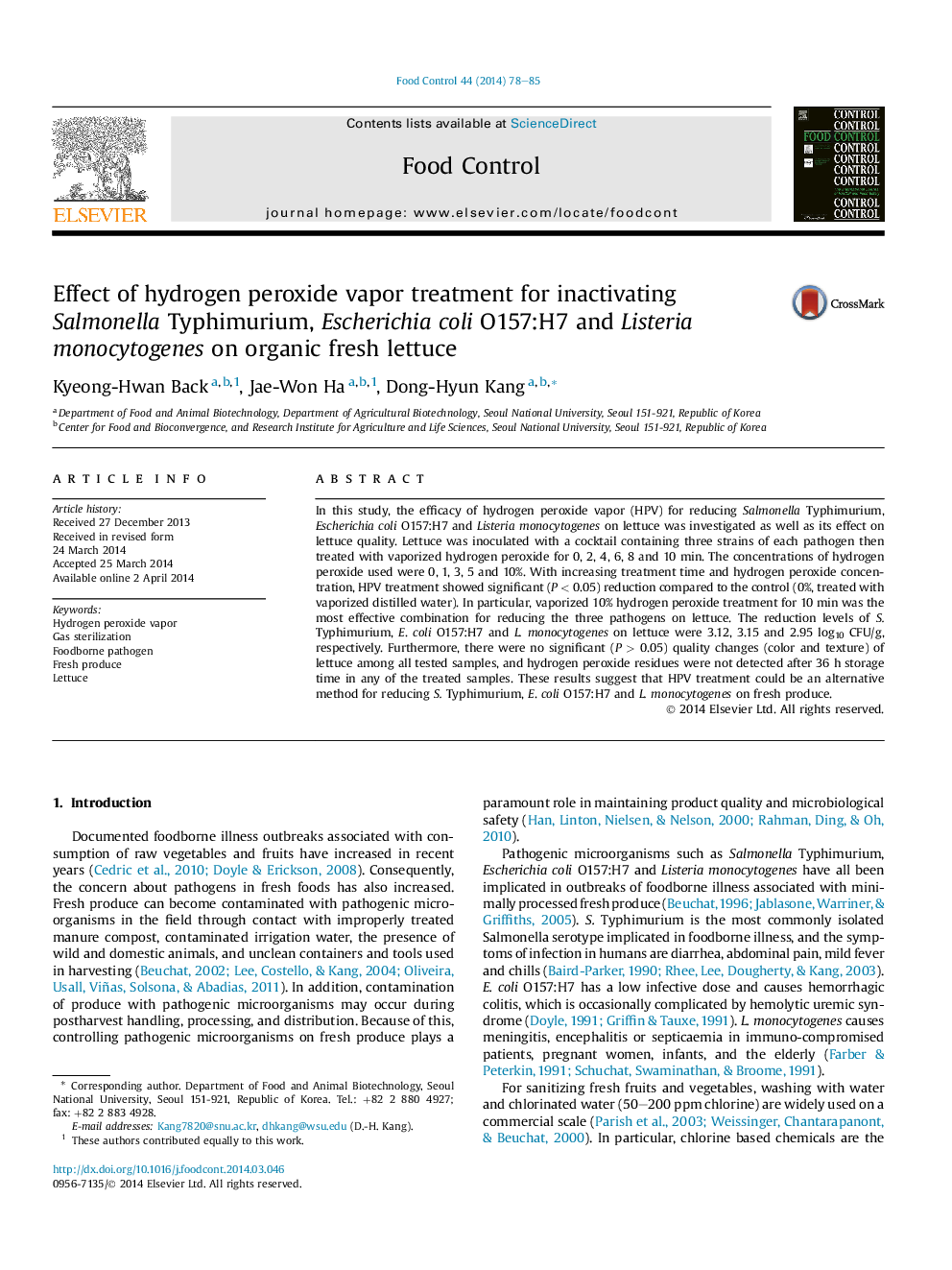| Article ID | Journal | Published Year | Pages | File Type |
|---|---|---|---|---|
| 4559340 | Food Control | 2014 | 8 Pages |
•Fresh lettuce inoculated with foodborne pathogens was treated with hydrogen peroxide vapor.•Three pathogens on surfaces of lettuce were significantly inactivated by HPV.•No significant influences on quality of lettuce were observed after HPV treatment.•Hydrogen peroxide residues were not detected after 36 h storage time in samples.
In this study, the efficacy of hydrogen peroxide vapor (HPV) for reducing Salmonella Typhimurium, Escherichia coli O157:H7 and Listeria monocytogenes on lettuce was investigated as well as its effect on lettuce quality. Lettuce was inoculated with a cocktail containing three strains of each pathogen then treated with vaporized hydrogen peroxide for 0, 2, 4, 6, 8 and 10 min. The concentrations of hydrogen peroxide used were 0, 1, 3, 5 and 10%. With increasing treatment time and hydrogen peroxide concentration, HPV treatment showed significant (P < 0.05) reduction compared to the control (0%, treated with vaporized distilled water). In particular, vaporized 10% hydrogen peroxide treatment for 10 min was the most effective combination for reducing the three pathogens on lettuce. The reduction levels of S. Typhimurium, E. coli O157:H7 and L. monocytogenes on lettuce were 3.12, 3.15 and 2.95 log10 CFU/g, respectively. Furthermore, there were no significant (P > 0.05) quality changes (color and texture) of lettuce among all tested samples, and hydrogen peroxide residues were not detected after 36 h storage time in any of the treated samples. These results suggest that HPV treatment could be an alternative method for reducing S. Typhimurium, E. coli O157:H7 and L. monocytogenes on fresh produce.
